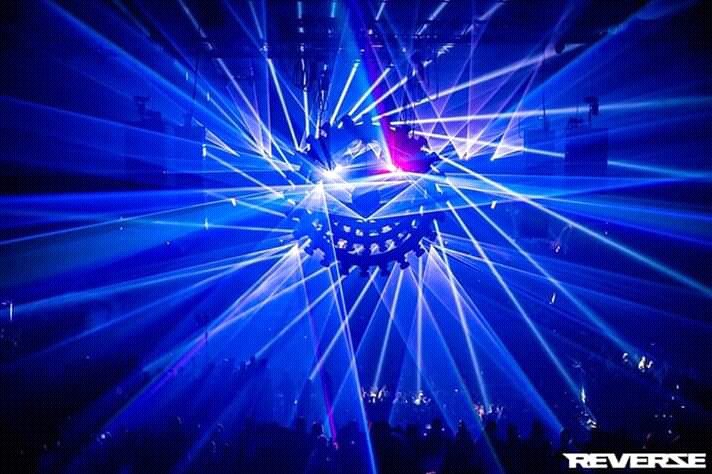1 STAGE LIGHTING AN OVERVIEW
Light according to the English dictionary is "The natural medium emanating from the sun and other very hot sources (now recognized as electromagnetic radiation with a wavelength of 400-750 nm), within which vision is possible."
Light has always been one of the most important element of human life.
In light of this, lighting design according to Jean Rosenthal is "the imposing of quality on the scarcely visible air through which objects and people are seen."
In the theatre, light plays an important role in the revealing of the action on stage and makes the world of the play visible. Adesina supports this when he states in the journal of theatre design and technology that, light is generally meant to give illumination. Thus, it is used to enhance vision and give sight in place of darkness; indeed, it is essential in theatre and cannot be ignored.
This expression by Adesina revels the fact that the primary function and use of light both in the theatre and outside the theatre is for illumination.
Wilson observes that;
Like scenery, costumes, and other elements of theatre, stage lighting... have counterparts in everyday life. For example, in real life the basic function of lighting is of course, illumination-to allow people to see at night and indoors. But there are also many theatrical uses of light in daily life. (309).
Appiah also supports this statement when he notes that "one of the main unquestionable purpose of lighting is to make a performance visible." (Cited in journal of theatre design and technology. Ed Sunday).
Quoting Adesina in the journal of theatre design and technology, he asserts that; "the function of light are diverse, and each one is seen as part of the essentiality of its productivity which includes mood creation, reflection of day and seasons and harmonization of all aspects of the theatre". (85-86).
In light of this aforementioned Nwadigwe agrees that there are numerous functions of stage lighting in the theatre when he states in the journal of theatre design and technology that "lighting reinforces mood, time, season and local of action." (83).
Adesina asserts that "what lighting does in the creation of mood is to transits from one mood to another, either of joy, happiness or sadness, such that it affects the perception and understanding of the audience." (In Sunday 86).
Barranger attests to this when he posits that;
Light affects what we see, how we see, how we feel, and even how we hear. It is essential to the modern stage's theatrical effectiveness. It is also one of the most powerful tools the director has to control the audience focus of attention and to enhance their understanding. (294).
In the theatre worldview, light is one of the most important tool the director has to control what the audience sees at a particular point of action in a production.
Adesina as quoted in a journal of theatre design and technology believes that;
Because of the need to make the work of all other production crew members -especially that of the artistic director- more visible, lighting is considered a priority. This element enhances the blocking and movement of actors on stage. (85)
In the same view, Nwadigwe cited in journal of theatre design and technology asserts that; the theatre is primary a place where people go to see and experience an event; and the act of seeing without light is inconceivable. (86).
Cited in quality assurance, Appiah states that "light is to the production what music is to the score: the expressive element in opposition to the literal signs; and, like music, light can express only what belongs to the inner essence of all vision' vision."(416).
According to appiah in journal of theatre design and technology,
light is the most important plastic medium on stage... without its unifying power our eyes would be able to perceive what objects were but not what they expressed...what can give us this sublime unity which is capable of uplifting us? Light...light and light alone, quite apart from its subsidiary importance in lighting a dark stage, has the greatest plastic power, for it is subject to a minimum of conventions and so is able to reveal vividly in its most expressive form the eternally fluctuating appearance of a phenomenal world.(24).
Quoting Oni in an article published in quality assurance attests that stage lighting "is the arrangement of light to achieve particular effects."(416)
Simonson also agrees to this when postulate in the journal of theatre design and technology that light, "can express the inner nature of appearances; light is the scenic painter." (24).
In Light of the above postulation, Pilbrow as retrieved in the journal of theatre design and technology states that; light is used as an element of design in space, but this design is not static, as in painting or sculpture. Lighting design space and in time. The controlled compositions of light may change and follow the play like a musical accompaniment. (85).
time. The controlled compositions of light may change and follow the play like a musical accompaniment. (85).
Congratulations @parrot-web! You have completed the following achievement on the Hive blockchain and have been rewarded with new badge(s) :
You can view your badges on your board And compare to others on the Ranking
If you no longer want to receive notifications, reply to this comment with the word
STOPTo support your work, I also upvoted your post!
Do not miss the last post from @hivebuzz: